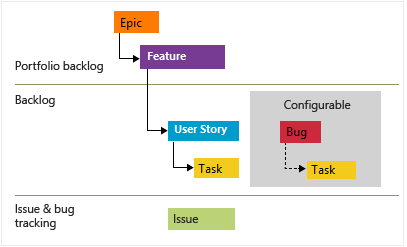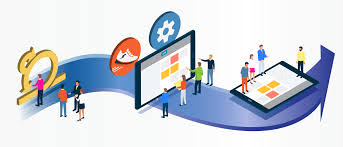In helping companies and individuals in Scaled Agile Transformations or Agile coaching, I often get asked about the difference between epics, features, user stories, and objectives?
In Scaled Agile Framework (SAFe), an epic is a large body of work that can be broken down into smaller units of work, such as features and user stories. An epic typically represents a significant business or customer need, and it can take several iterations to complete.
A feature is a smaller unit of work within an epic, and it typically represents a user-visible capability or function. A feature is typically delivered in a single iteration and it can be decomposed into one or more user stories.
A user story is a description of a specific user need or benefit, written from the perspective of the user. It typically follows a specific format, such as “As a [user], I want [something] so that [benefit].” A user story is a small, self-contained piece of work that can be completed in a single iteration.
An objective is a goal or target that a team or organization wants to achieve. In SAFe, objectives are typically defined at the portfolio level and aligned with the organization’s strategic goals. They serve as the foundation for planning and executing work at the program and team levels.
Here is how they all fit together:

- Objectives are the high-level goals or targets that an organization wants to achieve. They are typically defined at the portfolio level and aligned with the organization’s strategic goals.
- Epics are large bodies of work that represent significant business or customer needs. They are typically decomposed into smaller units of work, such as features and user stories.
- Features are smaller units of work within an epic, and they typically represent user-visible capabilities or functions. They are typically delivered in a single iteration and can be decomposed into one or more user stories.
- User stories are descriptions of specific user needs or benefits, written from the perspective of the user. They are small, self-contained pieces of work that can be completed in a single iteration.

This is an example of how you might break down a request to consolidate data sources into one system of record:
Objective: Improve data quality and consistency across the organization
Epic: Consolidate data sources into a single system of record
Features:
- Develop a data consolidation plan
- Implement a data governance framework
- Migrate data from multiple sources into the single system of record
- Validate the accuracy and completeness of the consolidated data
User Stories:
- As a data analyst, I want to develop a data consolidation plan so that I can identify the data sources that need to be consolidated and the steps required to do so.
- As a data governance manager, I want to implement a data governance framework so that I can ensure consistent data quality and maintain compliance with regulations.
- As a data engineer, I want to migrate data from multiple sources into the single system of record so that I can consolidate the data into a single location.
- As a data quality analyst, I want to validate the accuracy and completeness of the consolidated data so that I can ensure that the data is reliable and usable.
In the example above, the objective represents the high-level goal of improving data quality and consistency across the organization. The epic represents the large body of work required to consolidate data sources into a single system of record. The features represent the major components of the epic, and the user stories represent the specific tasks that need to be completed to deliver each feature. This hierarchical structure allows teams to focus on delivering value to customers and achieving the organization’s objectives.
